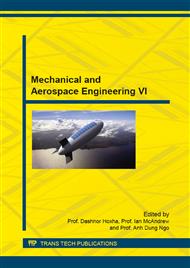p.582
p.589
p.596
p.602
p.609
p.615
p.622
p.627
p.632
A “Laminar + Transition Criteria” Model for Hypersonic Three-Dimensional Boundary Layer Transition Prediction
Abstract:
A “laminar + transition criteria” model utilizing Reθ/Me and ReCF criteria in conjunction with an intermittency function Γ is developed in this paper. With pretreated computational grid and total enthalpy h0=(h0,∞)max criteria the boundary layer edge and crossflow velocity can be obtained by using parallel methodology. Validation is accomplished via HIFiRE-5 and a blunt cone with small angle of attack. Results show that computed Reθ/Me and ReCF distributions are similar to the N-factor for streamwise instability and crossflow instability from linear PSE methods. The shape and trend of transition regions predicted by the “laminar + transition criteria” model in HIFiRE-5 and blunt cone are in good agreement with the experiment and DNS. However, for the transition induced by inflection point on streamwise velocity profiles, using criteria related to boundary layer thickness is inappropriate and can predict transition onset prematurely.
Info:
Periodical:
Pages:
627-631
Citation:
Online since:
October 2015
Authors:
Keywords:
Price:
Сopyright:
© 2015 Trans Tech Publications Ltd. All Rights Reserved
Share:
Citation:


